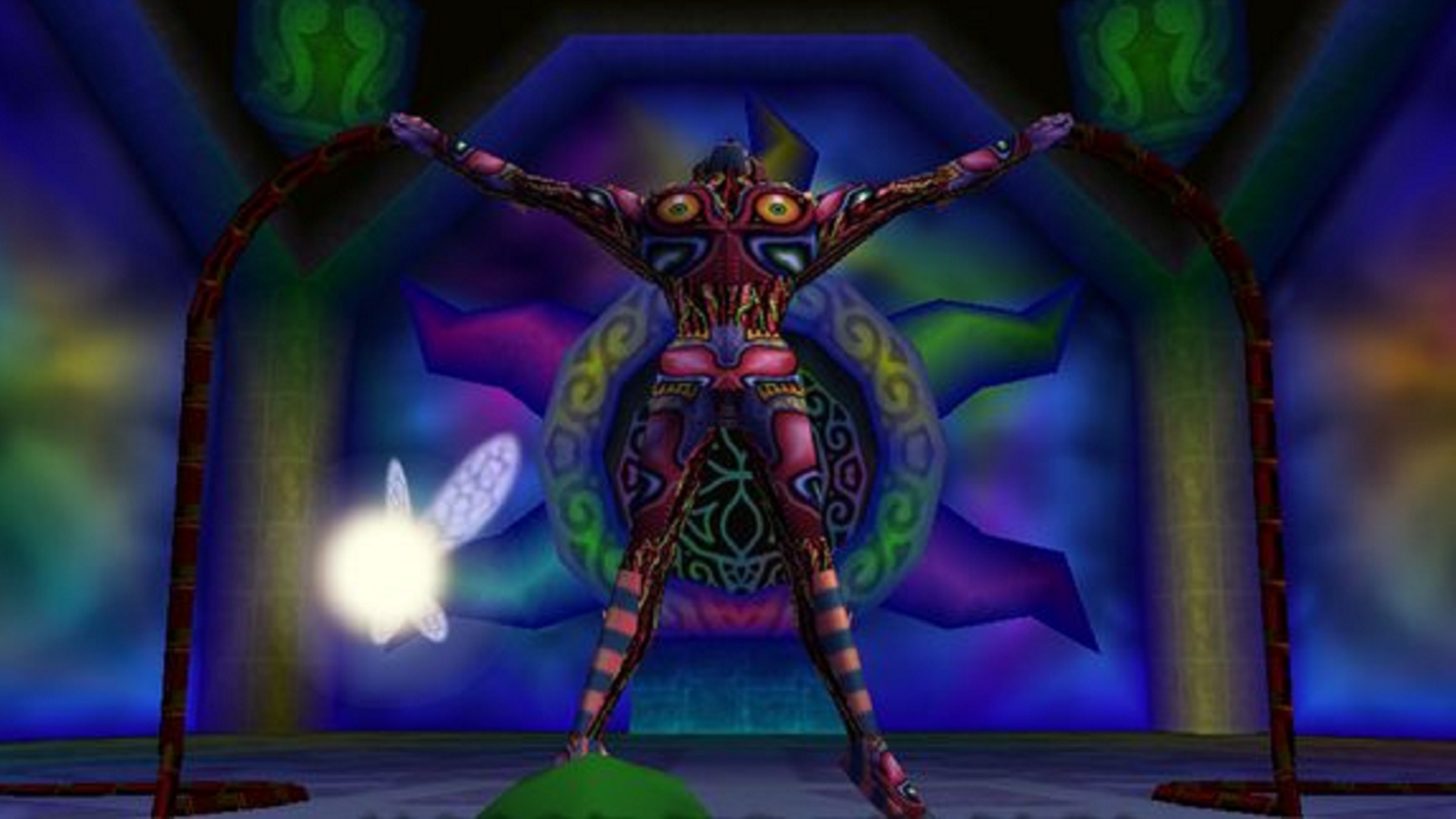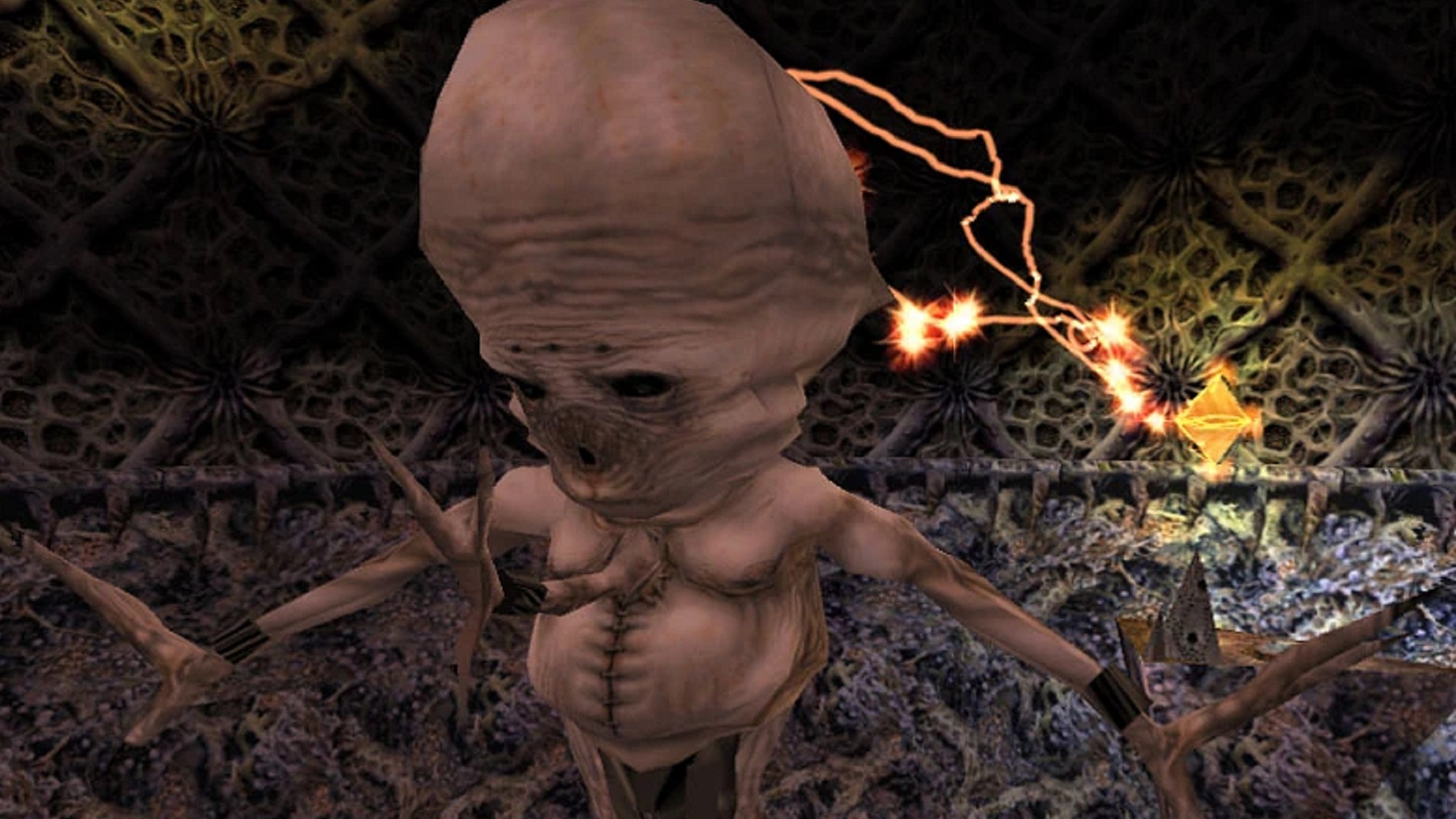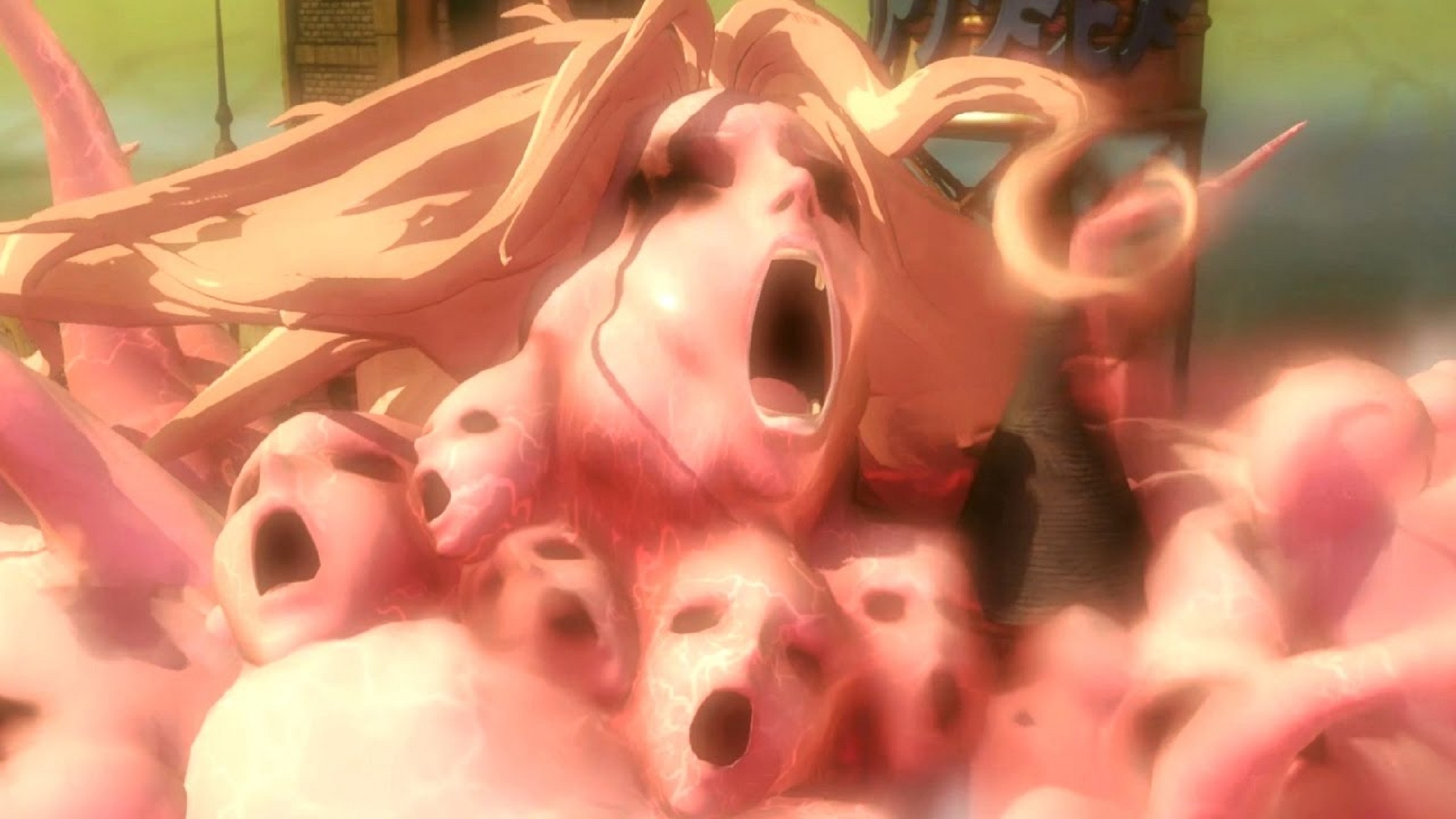When you play a game outside of the horror genre, you don’t go into it expecting to witness pure nightmare fuel. However, there are quite a few enemies in non-horror games that are terrifying enough to keep you thinking about them long after you encounter them. Some might even make you want to turn off the game and find something else to play. For standard enemies, you have well-known examples like the Flood in Halo and Dead Hands in The Legend of Zelda: Ocarina of Time. But terrifying bosses in non-horror games come with another level of terror.
Videos by ComicBook.com
Sometimes, it’s not until a certain phase of a boss fight that the enemy becomes horrifying. Other times, you fight the same boss multiple times as they change, and come across one of their forms to learn that it’s frightening. In the same way that horror games can look like they aren’t scary and trick you into questioning them, these bosses trick you into questioning if you’re actually playing a horror game and just didn’t realize it.
5. Giygas (Earthbound)

Giygas is the final boss of Earthbound, being called the “embodiment of evil” across the universe. His appearance alone is enough to unsettle you, as he’s a mix of distorted red faces against a black background. By the time you face Giygas, he’s in the Devil’s Machine and barely has any sanity left, making his attacks random. However, the more unsettling part of the fight is his erratic, confusing speech. The entire fight feels like it would fit right into a horror game, and that might be exactly why it’s so memorable.
4. Majora (The Legend of Zelda: Majora’s Mask)

The entirety of Majora’s Mask feels like it should be a horror game, but it’s not. At least, not officially. Majora is particularly terrifying, especially when you consider that this entity is limited by being sealed inside a spooky mask, and it was still almost able to destroy Termina. Then, you have the actual fight against Majora, where it takes on a rather sinewy appearance, as if it’s a person with muscles but without any skin covering them, and the fighting style is even unsettling. After the strangeness of the entire game, you’d think you’d be prepared for such a creepy boss fight, but that’s not always the case.
3. Nightmare (Metroid Fusion)

True to its name, Nightmare is a terrifying enemy in Metroid Fusion, although it also appears as a boss in Metroid: Other M. However, Nightmare in Metroid Fusion has been rebuilt after its defeat, and it’s now infected by the X Parasites. During your fight, Nightmare’s appearance becomes increasingly grotesque, particularly after you destroy its face plate. Underneath is a face with several pairs of glowing eyes that seem to be drooping. Even worse, its face grows more distorted as you continue dealing damage until the end of the fight.
2. Nihilanth (Half-Life)

Half-Life has some unusual enemy appearances, but nothing is quite as unsettling as Nihilanth. Nihilanth is the leader of the alien forces, but he has an appearance that seems to suggest he’s been experimented on. He has an almost fetal appearance to him, but with an extra arm sticking out of his chest and rows of stitching that make it look like he’s been pieced together. While his role in the story isn’t exactly the most unsettling—he feels like a standard leader-type that tries to demoralize you as you fight him—his appearance alone makes him the kind of boss that lingers in your mind.
1. Mutated Kali (Gravity Rush 2)

Kali Angel in Gravity Rush 2 wants to bring back her sister’s memories, but Durga keeps defaulting to her Cecie personality, which makes Kali grow increasingly unhinged. As a result, Kali’s regenerative abilities start to run wild. She absorbs Durga as she’s unable to control the ability, leading to them becoming Mutated Kali, a blob-like creature with numerous heads and limbs that looks like it’s constantly in pain. It’s an unexpected transformation, and one that’s difficult to get out of your brain after you see it.
Want to stay up to date on the biggest geek entertainment news? Add us as a preferred source in Google – HERE.








